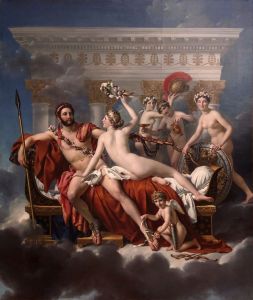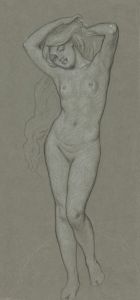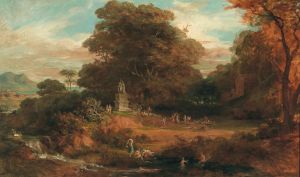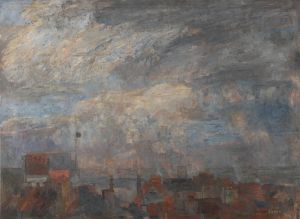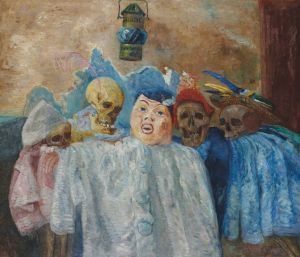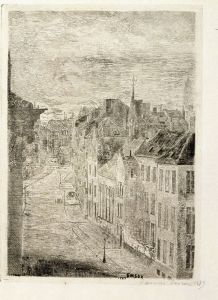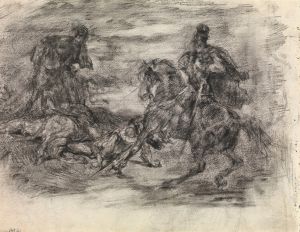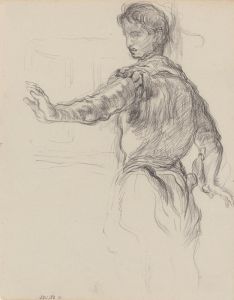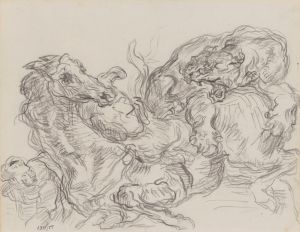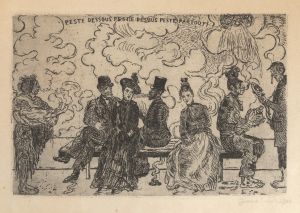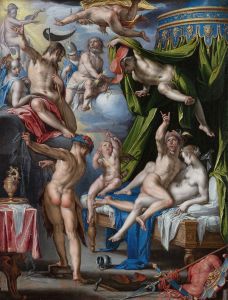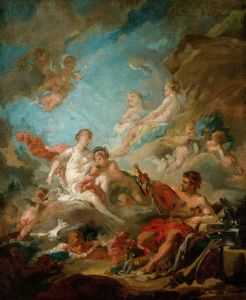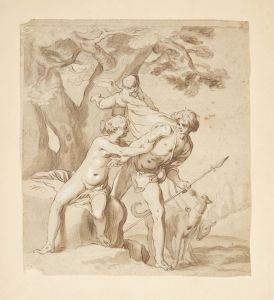
La naissance de Vénus
A hand-painted replica of James Ensor’s masterpiece La naissance de Vénus, meticulously crafted by professional artists to capture the true essence of the original. Each piece is created with museum-quality canvas and rare mineral pigments, carefully painted by experienced artists with delicate brushstrokes and rich, layered colors to perfectly recreate the texture of the original artwork. Unlike machine-printed reproductions, this hand-painted version brings the painting to life, infused with the artist’s emotions and skill in every stroke. Whether for personal collection or home decoration, it instantly elevates the artistic atmosphere of any space.
James Ensor's "La naissance de Vénus" (The Birth of Venus) is a painting that reflects the unique style and thematic interests of the Belgian artist, who was active during the late 19th and early 20th centuries. Ensor is known for his innovative and often provocative works that blend elements of symbolism, expressionism, and surrealism. His art frequently explores themes of fantasy, satire, and the grotesque, often challenging conventional norms and expectations.
"La naissance de Vénus" is one of Ensor's many works that draw inspiration from classical mythology, yet it is interpreted through his distinctive lens. The painting is a reinterpretation of the traditional mythological subject of the birth of Venus, the Roman goddess of love and beauty, who is often depicted emerging from the sea. This theme has been a popular subject in Western art, famously depicted by artists such as Sandro Botticelli in his renowned work "The Birth of Venus."
Ensor's version, however, diverges significantly from the idealized and harmonious depictions of Venus seen in earlier art. Instead, Ensor infuses the scene with his characteristic eccentricity and a sense of the absurd. The painting may feature exaggerated forms, vibrant colors, and a composition that challenges the viewer's expectations. Ensor's Venus might be surrounded by a chaotic array of figures and objects, reflecting his interest in the carnival-like aspects of human existence and the blending of the sacred with the profane.
James Ensor was born in 1860 in Ostend, Belgium, and spent most of his life there. He was a central figure in the Belgian avant-garde movement and was associated with the group Les XX, which included other progressive artists of the time. Ensor's work often provoked strong reactions due to its unconventional style and subject matter. He was deeply influenced by the environment of Ostend, a coastal city known for its bustling life and vibrant carnival culture, which frequently appeared in his art.
Throughout his career, Ensor explored themes of mortality, identity, and the human condition, often using masks and skeletons as recurring motifs. These elements can also be seen in "La naissance de Vénus," where they might serve to question the nature of beauty and the superficiality of societal norms.
Ensor's work, including "La naissance de Vénus," has been recognized for its significant impact on modern art. His bold use of color, innovative compositions, and willingness to tackle complex themes have influenced subsequent generations of artists. Today, Ensor is celebrated as a pioneer who pushed the boundaries of artistic expression, and his works are held in major museums and collections worldwide.
"La naissance de Vénus" exemplifies Ensor's ability to reinterpret classical themes through a modern lens, offering a unique perspective that challenges viewers to reconsider traditional narratives. While specific details about the painting's creation and reception might be limited, it remains an important part of Ensor's oeuvre, showcasing his distinctive approach to art and his contribution to the evolution of modern artistic movements.





